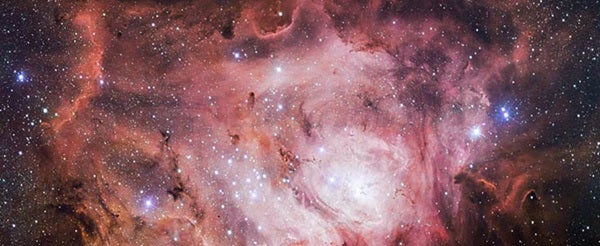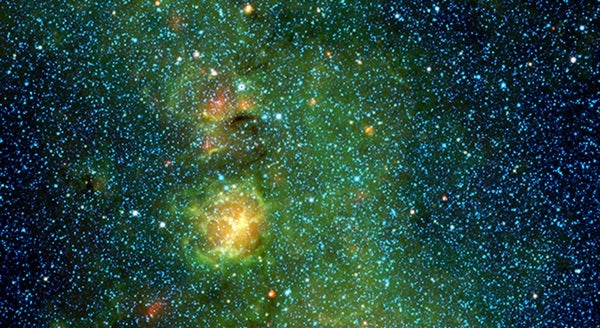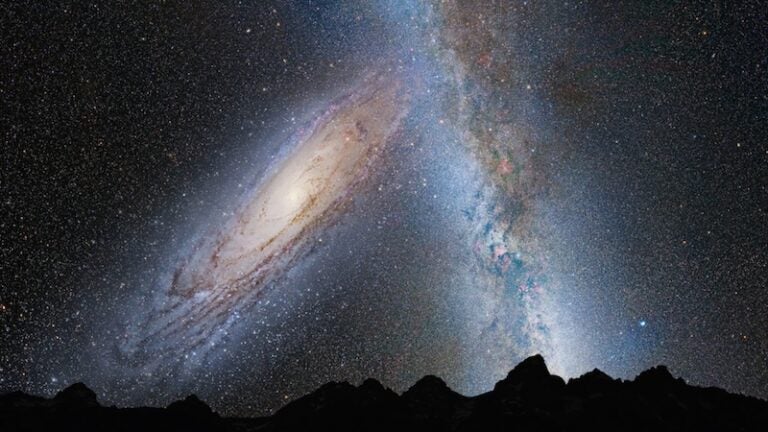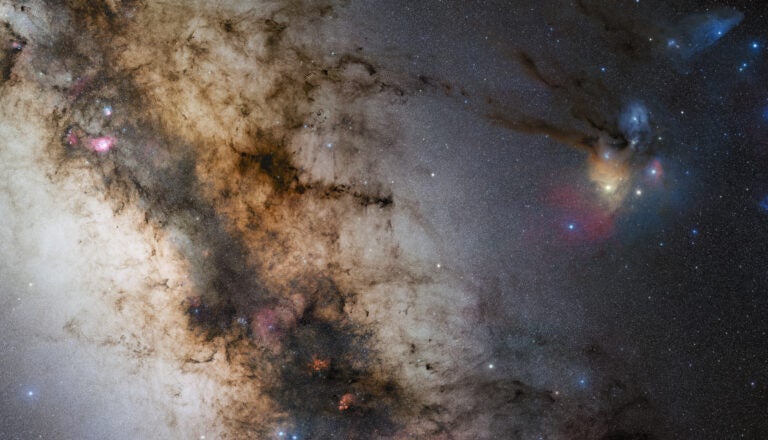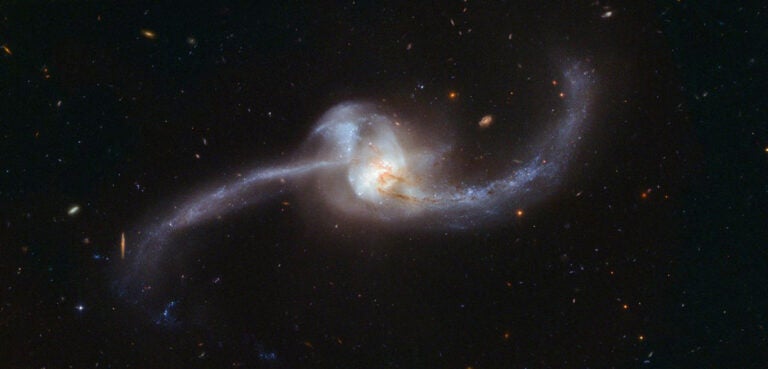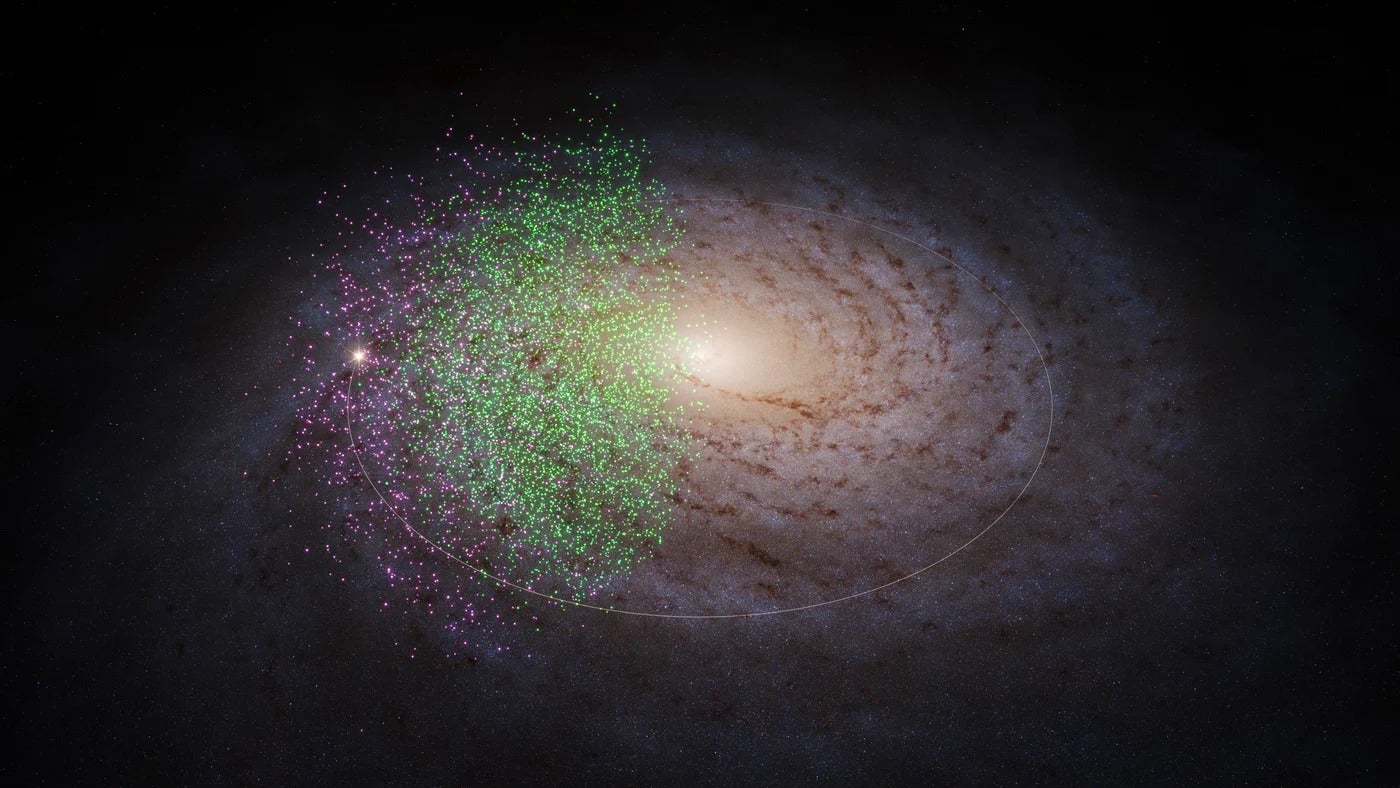Myriad binocular targets lie in this quarter of the sky. Let’s take a look at a few of my favorites.
We begin at M8, the Lagoon Nebula. You’ll find it 6° north of Gamma (γ) Sagittarii at the tip of the Sagittarius Teapot’s spout; just follow the “steam.” In fact, with dark skies you will probably be able to see it without any optical aid as a soft fuzz of starlight adrift in the Milky Way.
Binoculars reveal this soft fuzz to be an expansive emission nebula. Here, hydrogen is being ionized by energy from stars that are embedded within. As powerful radiation bombards the hydrogen atoms, the orbiting electron is ripped away, only to mate with an orphaned proton to reform a hydrogen atom. This back-and-forth process of ionization causes the cloud to glow in much the same way as the neon gas in signs glow.
In photographs, ionized hydrogen displays a vibrant red. But our eyes, which are nearly colorblind in dim light, see only varying shades of gray.
The eastern half contains many stars bright enough to crack the binocular barrier. Most were spawned from M8 and collectively form open cluster NGC 6530. Those same stars generate strong stellar winds that create funnel-shaped clouds resembling tornadoes here on Earth. Images from the Hubble Space Telescope show these interstellar twisters in amazing detail.
Many patches of dark nebulosity float silhouetted in front of the Lagoon’s bright clouds. For instance, take a look toward the northeastern corner of M8 for a small dark cloud shaped like a comet, oriented north-to-south. That’s Barnard 88, the 88th entry in Edward Emerson Barnard’s 1919 catalog of dark nebulae. B88 appears so small that it may be easily overlooked through 7x to 10x binoculars. Higher magnifications and larger apertures, however, go a long way to making its presence known.
M8 lies just over a degree south of another well-known Messier target, M20, the Trifid Nebula. Photographs show a pansy-shaped cloud of red emission and blue reflection nebulae interlaced with ribbons of opaque dust.
I have never spotted the intertwining lanes of dark nebulosity that give rise to the “Trifid” nickname through my 10×50 binoculars. They are, however, fairly evident through my 16x70s. What is the smallest binocular that will show them? I would be interested in hearing your results.
Open cluster M21 is just half a degree northeast of M20. Its 70 stars are packed into an area spanning less than a quarter of a degree, so things are tight. Most shine below binocular threshold, although a few individual points of light shine through the soft glow formed from the rest.
I’d love to hear about your binocular conquests. Email me at binophil@outlook.com.
The area around M8, M20, and M21 is lovely for just idly stargazing on a warm August night. I hope you’ll get out and enjoy all there is to see here the next opportunity you get. And as you do, remember that two eyes are better than one.


